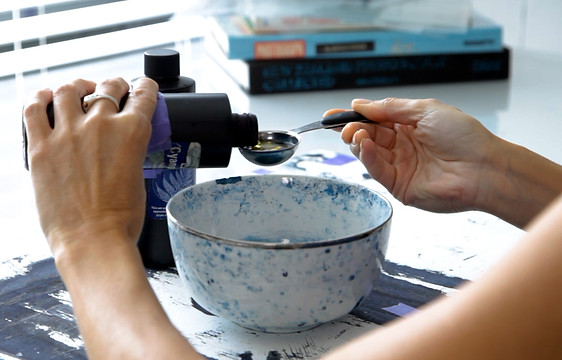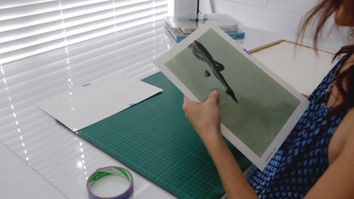CHRISTMAS SPECIAL! BUY ONE, GET ONE HALF PRICE
Sale ends 21/12/25 - Some Exclusions Apply
What is cyanotype?
The cyanotype process was invented in 1842 by British scientist Sir John Herschel. Originally used to copy notes and diagrams, it soon found artistic expression through Anna Atkins, whose botanical studies are considered the first photographic book. Cyanotype later became popular for reproducing architectural drawings—hence the term “blueprints.” Today, it remains a beloved process for its simplicity, use of sunlight, and the striking way it transforms light and shadow into deep blue.
The process starts by coating a surface—such as paper—with a light-sensitive solution. When exposed to UV light (typically sunlight), areas covered by objects or negatives remain pale, while exposed areas darken. Rinsing the material with water reveals the image, which then deepens into cyanotype’s dramatic blue as it dries.

Sophia's Process
Sophia begins with an idea for a new cyanotype series, followed by photographing and designing the images. From there, she creates and refines her negatives - sometimes going through dozens of versions before finding the one that feels right. For her Chiaroscuro Feathers series, she made 37 different negatives before arriving at the final prints.
Once a series is ready, production begins. Each limited edition print is handmade. Sophia coats watercolour paper with cyanotype solution and, once dry, places the negative on top. It’s then secured and exposed to sunlight, allowing the UV light to bring the image to life. After exposure, the print is washed to reveal its final form, then left to dry and oxidise fully over 24 hours.
Once dry, the print is flattened and any final touches - such as gold leaf - are added with care.
Cyanotype is a beautifully unpredictable process. Each session is shaped by light, timing, and chance. It’s not until the next day that Sophia knows whether a print has truly worked—and she wouldn’t have it any other way.







